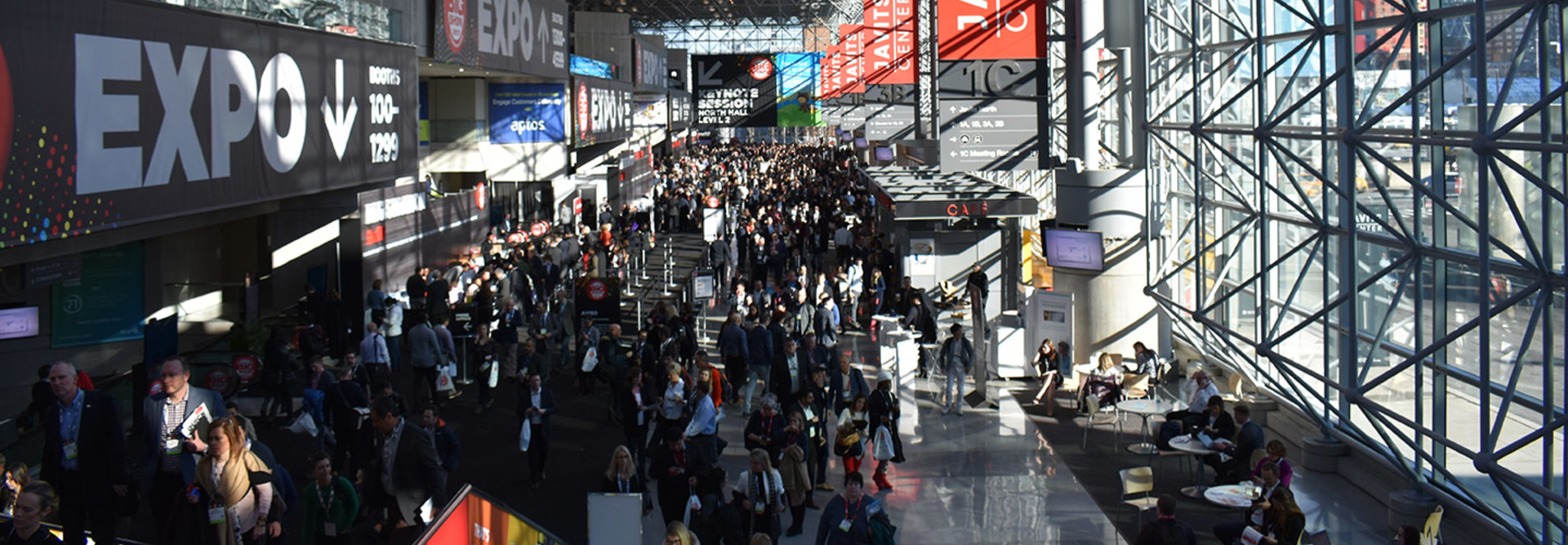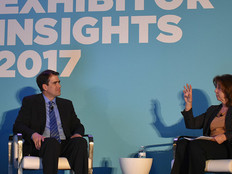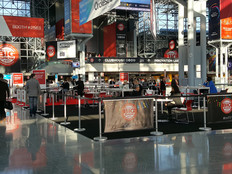NRF’s BIG Show 2017: Retailers Must Invest in Tech to Effectively Compete
Amazon's retail business is eating retailers’ lunch — and dinner too. To compete with the online retail behemoth, retailers must invest in technology at higher rates and transform their IT environments, retail analysts say.
The goal that many retailers are now trying to achieve is known as “unified commerce,” which, in the words of retail research firm Boston Retail Partners, involves a “single, centralized, real-time platform for all customer engagement points.” Unified commerce “combines point-of-sale, mobile, web, call center and clienteling into one single integrated platform.”
At a breakfast panel on challenges facing retail CIOs at NRF Retail’s BIG Show 2017 in New York City, Greg Buzek, president of IHL Group, a research firm for the retail and hospitality industries, noted that while overall retail sales were up in the holiday shopping season by around 3.6 to 4.9 percent over 2015, Amazon's retail business garnered 38 percent of all online sales during the season and shipped more than 2 billion items.
How big is Amazon in retail? Buzek noted that more than 50 percent of U.S. households have Amazon Prime memberships, and spent more than $17 billion on shipping in 2016, which is more revenue than Starbucks took in. Amazon's retail business also spent $15.1 billion on innovation, greater than 20 leading U.S. retailers combined, he said.
Given that, Buzek said retailers need to increase IT spending by 87 percent to 237 percent to effectively compete with Amazon's retail store and close the technology innovation gap in retail (TIGIR for short). Average IT spending is increasing by about 4.7 percent.
Investing in Cloud for Retail IT
How can retailers compete with such a behemoth? Jeff Roster, vice president of strategy at IHL, said that retailers need to invest in unified commerce and leverage the cloud to jump-start their efforts. They also need to take greater advantage of mobile platforms and create customer experiences that have a “wow” factor.
“You are either at the table of unified commerce or you’re on the menu,” he said.
That means investing in order management systems that give retailers a single view of orders across all channels, up-to-date POS systems and the ability to access inventory and loyalty programs in real time.
For 2017, based on surveys IHL has conducted, the research firm expects retailers to increase enterprise and store IT spending by 4.5 percent and 4.7 percent, respectively. “Increasing enterprise IT spending is mission-critical for success when you’re competing with not just retailers but a great technology company” in Amazon's retail business, Roster said.
The survey showed that 59 percent of retailers expect to upgrade customer relationship management (CRM) loyalty programs in 2017 and 46 percent are investing in single-order management capabilities. However, retailers are also investing in many other technology areas. Fully 30 percent expect to invest more in mobile solutions for sales associates and 23 percent are investing in IT transformation.
Retailers will also invest much more in the cloud in 2017, IHL expects. The firm’s survey shows that 34 percent of retailers’ software budgets will be spent on the cloud in 2017, up from 26 percent in 2016. Those software areas include store systems, business intelligence and analytics, e-commerce, merchandising, sales and marketing, enterprise resource planning and supply chain.
“Without a doubt cloud adoption is increasing dramatically,” Roster said. According to IHL, Tier 1 retailers will spend 30 percent of their software budgets on cloud e-commerce platforms, while Tier 2 and Tier 3 retailers plan to spend 57 percent of their software budgets on those systems.
Meanwhile, retailers are reinvesting in other IT. IHL’s survey shows that 27 percent of retailers consider their POS systems up to date, and 25 percent plan to upgrade in the next year.
Additionally, 14 percent say their digital signage is in place and up to date, with 15 percent planning to upgrade in the next year. Roster said that digital signage will need to evolve and become far more interactive and intuitive, which will require new hardware, software and network infrastructure as retailers make their stores “clickable.”
Modell's, Neiman Marcus Execs Share IT Lessons
Retail executives at the breakfast panel also offered their own takes on IT investment. David Strobelt, CIO of Modell’s Sporting Goods, said that while Amazon's retail business is pouring money into fulfillment centers and shipping to get products to customers sooner, Modell’s, which is privately held, is “focused on healthy growth around unified commerce.”
In the last few years, he said, Modell’s has established the architecture for an order management system and enabled same-day shipping. The company needed to make sure that inventory was updated in real-time in all channels. “We felt like if we didn’t have that in place from a fulfillment perspective, then from a customer satisfaction perspective we’d have too many hurdles,” to overcome, he said.
Scott Emmons, director and founder of the innovation lab for the Neiman Marcus Group, noted that since the lab’s founding four years ago, the company has made similar investments, including a CRM system – with a POS system coming last. “You can’t eat the whole elephant at once,” he said.
Buzek noted that a POS system is the most expensive system for retailers to upgrade – and he advises replacing it last. He noted that if a retailer spends months or years to build out a new order management system, the new POS system will sit in stores while that work progresses and will not have all the functionality it needs.
Emmons said the innovation lab was created to make IT a higher priority for Neiman Marcus. Before, business leaders would “ambush” IT with a proposal and the tech team would need to say “no” because it did not have the budget or infrastructure. Now, the IT leadership is involved in conversations about business plans and can develop its own budget to plan strategically, thus delivering a better customer experience, he said.
Strobelt said that for a small to medium-sized business like Modell’s, which has 158 stores, it can be “overhwelming when you see the investments that the big players” are making in retail IT. SMBs do not have the budget to play “innovation roulette” and bet on 10 projects, hoping that some will be successful.
SMBs need to be wiser in their IT investments and “create strategic partnerships” with vendors and solutions providers. Often, vendors are so confident in their solutions that they will let Modell’s pilot the technology to see the return on investment. “We’ve got a lot of projects where we played before we paid,” he said.
Read articles and check out videos from BizTech’s coverage of NRF Retail’s BIG Show 2017 here.









